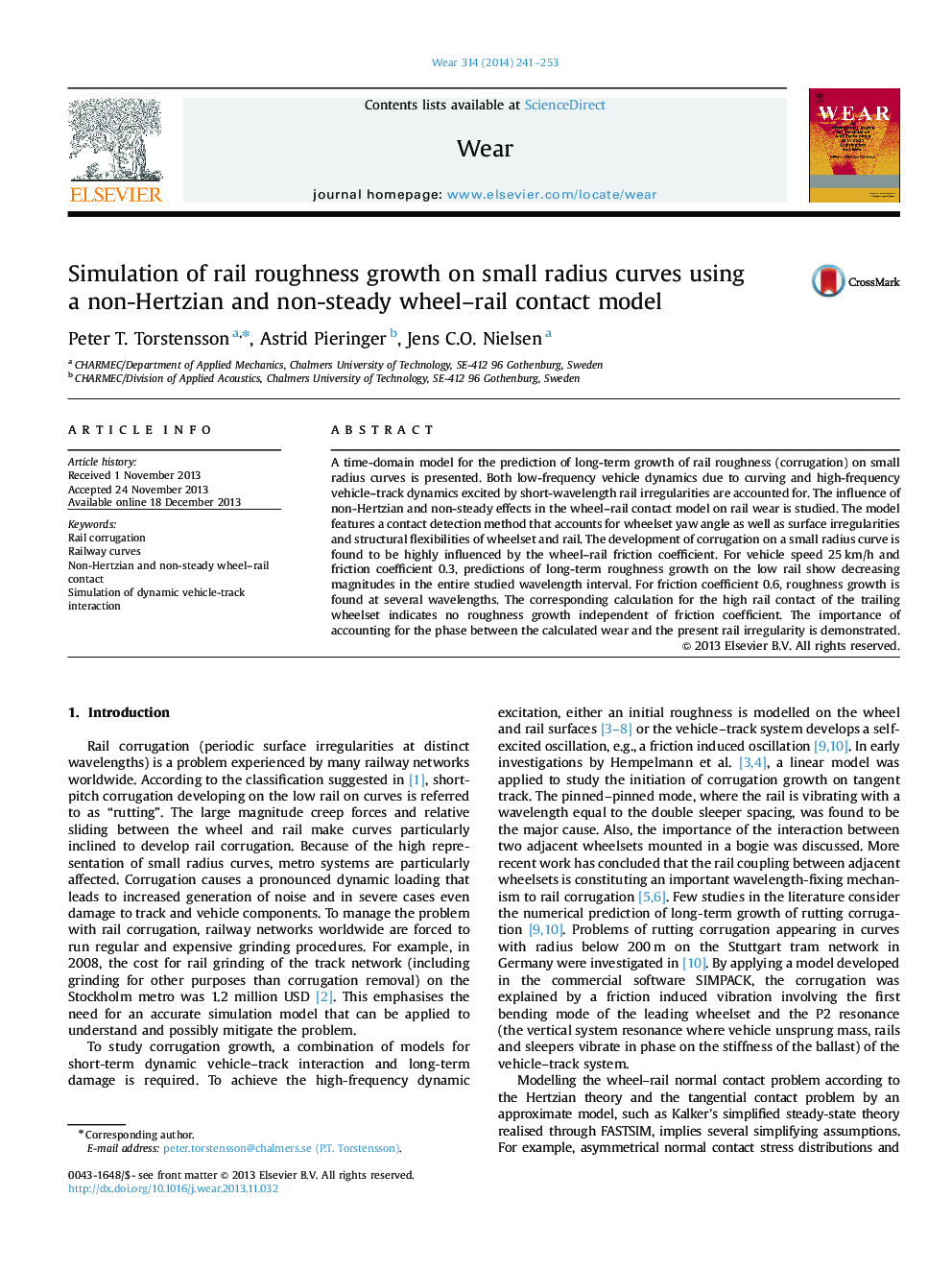| کد مقاله | کد نشریه | سال انتشار | مقاله انگلیسی | نسخه تمام متن |
|---|---|---|---|---|
| 617328 | 1454988 | 2014 | 13 صفحه PDF | دانلود رایگان |
• A time-domain simulation model able to predict long-term growth of rail corrugation on small radius curves is presented.
• In accordance with field observations, predictions show corrugation to develop into a constant amplitude.
• In accordance with field observations, simulations do not predict corrugation growth on the high rail.
• Predictions show the level of friction in the wheel–rail contact to have a large influence on corrugation growth.
A time-domain model for the prediction of long-term growth of rail roughness (corrugation) on small radius curves is presented. Both low-frequency vehicle dynamics due to curving and high-frequency vehicle–track dynamics excited by short-wavelength rail irregularities are accounted for. The influence of non-Hertzian and non-steady effects in the wheel–rail contact model on rail wear is studied. The model features a contact detection method that accounts for wheelset yaw angle as well as surface irregularities and structural flexibilities of wheelset and rail. The development of corrugation on a small radius curve is found to be highly influenced by the wheel–rail friction coefficient. For vehicle speed 25 km/h and friction coefficient 0.3, predictions of long-term roughness growth on the low rail show decreasing magnitudes in the entire studied wavelength interval. For friction coefficient 0.6, roughness growth is found at several wavelengths. The corresponding calculation for the high rail contact of the trailing wheelset indicates no roughness growth independent of friction coefficient. The importance of accounting for the phase between the calculated wear and the present rail irregularity is demonstrated.
Journal: Wear - Volume 314, Issues 1–2, 15 June 2014, Pages 241–253
